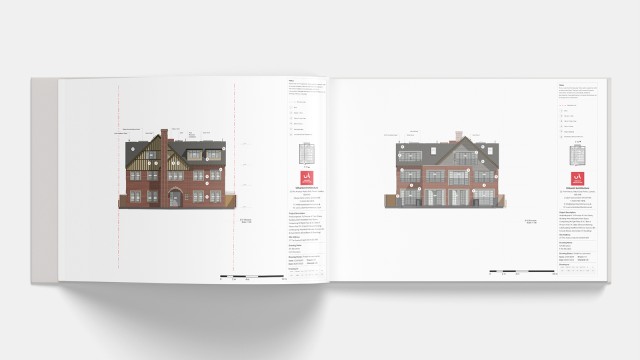Read next
The latest news, updates and expert views for ambitious, high-achieving and purpose-driven homeowners and property entrepreneurs.


After years of inertia and missed opportunities, the UK Government and the Mayor of London have finally struck a political agreement that could reshape the future of housing delivery in London.
This is no minor policy tweak but a multi-pronged, strategic package aimed squarely at tackling the viability bottlenecks that have paralysed development across London.
Rather than relying on a single fix, the intervention brings together five major reforms. Each one targets a different stage of the development pipeline.
These include cutting fixed costs like CIL, relaxing overly rigid design rules, creating a new time-limited planning route with grant support, expanding the Mayor’s planning powers, and launching a new fund to unlock complex or stalled sites.
In this article, we break down what this package means for you as a developer, based on the official October 2025 policy statement.
Whether you are reworking a stalled scheme, preparing a planning submission, or modelling out a new opportunity, we explain the five pillars of the package, how to qualify, what support is available, and which deadlines matter most.

In theory, the Community Infrastructure Levy (CIL) was designed to fund infrastructure without undermining viability.
In practice, especially in London, it has become a rigid tax that doesn't flex with market conditions, often hitting the exact sites where marginal schemes are teetering on the edge.
The new package acknowledges this systemic flaw. Instead of waiting for each borough to go through the arduous process of revising its CIL schedules, the Government is stepping in with a capital-wide relief measure to fast-track viability restoration.
Crucially, the policy distinguishes between infrastructure funding and affordable housing delivery.
With around half of England's affordable homes now delivered through Section 106 agreements, the logic is clear: trim CIL where it's making schemes unviable, and redirect that headroom into delivering homes, not just roads and roundabouts.
So, what exactly is changing?
The heart of the offer is a 50% reduction in borough-level CIL for qualifying residential schemes that commit to at least 20% affordable housing and can evidence that they are marginal or stalled.
The approach includes specific parameters:
The approach is transactional: if developers front-load meaningful, affordable delivery, they get a significant cost saving in return.
But here’s the catch. There are critical geographic and typological exclusions:
This means the relief will have uneven effects. In central boroughs where MCIL is high, total savings may be modest. But in outer boroughs, where land values are tighter and MCIL is lower, the impact on viability could be transformational.
It is also worth noting that many boroughs are holding large balances of unspent developer contributions (CIL & S106) - raising important questions about whether the existing infrastructure burden on developers is proportionate or effectively deployed.
The Government is rightly wary of blanket discounts. Relief will be subject to clear, proportionate qualifying criteria, with a viability gateway to focus support on genuinely marginal schemes.
While boroughs may be allowed some discretion, the aim is a consistent, rule-based system, not one prone to case-by-case negotiation.
Timing will be critical. Developers must plan to align phasing and affordable delivery with the relief window. Miss it, and the opportunity is gone.
Here’s what we’re seeing on the ground. At Urbanist Architecture, we've witnessed countless schemes stall at the final viability hurdle, with CIL often being the straw that breaks the camel's back.
This intervention represents a fundamental shift in how we think about development contributions. The Government has finally acknowledged what we've been arguing for years: that rigid infrastructure charges can actually prevent the very development that would generate those contributions.
What's particularly shrewd about this approach is its surgical precision. By targeting only borough CIL on genuinely marginal schemes, it avoids accusations of a developer giveaway whilst addressing the real pinch points.
We're already advising clients with stalled permissions in outer London boroughs to dust off their feasibility studies.
In places like Barking & Dagenham, where we've seen residual land values collapse by 40% since 2022 (a trend confirmed by Centre for Cities' analysis of the Building Safety Regulator impact), this 50% CIL reduction could be the difference between a dead scheme and a live one.
The time-limited nature is also clever politics. It creates urgency without establishing a permanent subsidy. Our message to clients is clear: if you have a marginal scheme, move now. This window won't stay open, and the political winds could shift quickly.
We're particularly interested in how this might unlock medium-density suburban schemes that have been caught between high infrastructure costs and cautious sales values.
Next up: design standards.

The London Plan and its associated design standards have long aimed to ensure quality housing, but in many cases, their rigidity has become a straitjacket. Over time, guidance on dual-aspect dwellings, units per core, and cycle parking has solidified into near-mandatory constraints, often at the expense of viability and site optimisation.
This new package aims to replace that rigidity with a principle-led approach, maintaining quality without dictating form.
Dual aspect will remain a quality aspiration, but the GLA will withdraw the Housing Design Standards LPG sections that have turned this into a de facto requirement.
Developers will now be encouraged to use judgement, provided that homes are well-ventilated, well-lit, and avoid overheating. This opens the door to well-designed single-aspect units, particularly on constrained urban sites or those facing noise or air quality challenges.
Similarly, guidance that discouraged high dwellings-per-core ratios is being rethought. Previously treated as a ceiling, it will now be understood as indicative only.
Boroughs are instructed to support increased dwellings per core where quality and fire safety are maintained. This change enables more efficient design, better NIA:GIA ratios, and fewer circulation spaces eating into viability.
Cycle parking, often an afterthought in policy, has become a space-hungry cost driver. Basement levels, podiums, and ground-floor units have been sacrificed to meet on-plot cycle requirements, even as shared micromobility options have grown.
The GLA now plans to reduce minimum cycle parking standards, introduce greater flexibility in how provision is made, and allow off-site or financial-in-lieu contributions. This will be particularly important on constrained plots, where rigid on-site requirements risk undermining both design quality and viability.
But not everything is up for a change. The minimum space standards are not being relaxed - and rightly so. These benchmarks play a vital role in safeguarding liveability, ensuring that even as we embrace flexibility elsewhere, homes still offer adequate space for everyday life.
As residential architects working across London, we strongly support the continued enforcement of these standards. They reflect well-established research on wellbeing and usability, and in our experience, they set a baseline that protects residents from the kind of substandard micro-living that undermines long-term housing quality.
This is about more than one-off fixes. The Mayor's office is signalling a wider overhaul of how the London Plan operates, reducing complexity, removing duplication, and streamlining the path from concept to permission.
This represents the most significant philosophical shift in London's design policy in a decade. As architects who have spent years navigating the increasingly prescriptive landscape of London Plan guidance, we see this as a return to first principles: good design should be about outcomes, not compliance.
The dual aspect relaxation is particularly overdue. We've designed schemes where achieving dual aspect on every unit has forced inefficient layouts, oversized cores, and ultimately fewer homes.
On noisy arterial roads or near railway lines, single-aspect units away from the source of disturbance often provide better living conditions than forced dual-aspect arrangements. The new flexibility will allow us to deploy dual aspect where it genuinely adds value, not as a blanket requirement.
The dwellings-per-core change could be transformative for build-to-rent and affordable housing typologies. I recently worked on a scheme where reducing from nine to seven units per core added £2 million to construction costs, purely to satisfy guidance that had calcified into dogma. With this flexibility, we can return to efficient, elegant solutions that maximise the number of homes without compromising safety or quality.
But here's our challenge to the industry: flexibility requires responsibility. Just because you can squeeze more units per core doesn't mean you should. The test must always be liveability, not just viability.
At Urbanist Architecture, we'll be using this new freedom to create better homes, not just more profitable ones. The schemes that succeed under this new regime will be those that understand flexibility as an opportunity for innovation, not a race to the bottom.

This may be the most radical shift in planning policy since the introduction of the Fast Track Route. Unlike Fast Track, which rewards meeting established affordable thresholds with an exemption from viability testing, the new time-limited route is a full-spectrum intervention.
It provides upfront benefits, including CIL relief, access to grant funding, and greater design flexibility, in exchange for a lower affordable threshold in the short term and a gain-share mechanism if market conditions improve.
The new route is a response to London's deep viability crisis. It assumes risk now to unlock delivery but builds in mechanisms to capture upside later. This is policymaking with both urgency and foresight.
So, who actually qualifies?
The criteria are deliberately tight to target schemes that are truly stuck or marginal:
For Build to Rent (BTR), affordable housing can be 100% intermediate rent, if:
Public land and certain industrial sites have higher affordable thresholds, typically 35%, but utilities land with major contamination or remediation needs will still be eligible at the 20% baseline.
Clear exclusions apply:
The window is also narrow: decisions must be issued (not just resolved) by 31 March 2028, or the new London Plan will supersede the route.
The grant offer is both generous and disciplined:
Benchmark grant rates include:
These are high by London standards, offering real subsidy support. However, every grant must still comply with subsidy control rules, and developers must justify funding relative to risk and cost.
For full details on how to apply for grant funding for affordable housing under the new programme, developers should refer to the GLA’s official funding guidance.
But it’s not just about developers
To make this work, Registered Providers (RPs) and local authorities must be ready and willing to acquire the affordable units.
Only GLA Investment Partners will receive grant funding. And there's a clear expectation that, following the 2025 Spending Review, RPs and councils will step up, delivering more homes, more quickly, and to higher standards.
The document is frank: RP appetite for s106 has declined, not just due to finances, but also quality concerns. Developers are now expected to engage early with RPs and design affordable homes to be genuinely usable, not as bolt-ons or deadweight.
To prevent developers from capturing all the upside, a late-stage review mechanism is built in.
Safe harbours exist if the first floor is built by 31 March 2030, with no review required. For phased schemes, that means 200+ units per phase must be started. Delays caused solely by the Building Safety Regulator won't trigger a penalty.
If the milestone is missed, a review takes place once 75% of the scheme or final phase is occupied. Developers can choose between a formula-based review or a full open-book appraisal, particularly for complex schemes.
Benchmark Land Value is calculated as EUV + premium, with actual costs and values on an open-book basis. Expected returns of 15-20% of GDV are considered reasonable for market sale, with IRR-based returns usable in large phased schemes with justification.
Any surplus is split 60:40 in favour of the borough. For multi-phase developments, reviews must occur before each phase if the 2030 milestone is not met.
The GLA is clear: this route isn't just for new applications. Developers with existing consents are encouraged to re-evaluate schemes under the new route. If viability is the blocker, use a grant first, don't just seek to reduce obligations.
If a grant is requested without reaching 35% affordable, an Additionality Viability Assessment is required. And to prevent backdoor viability renegotiation, the Government will tighten Planning Practice Guidance to ensure Section 73 cannot be abused. Changes to obligations will require proper justification, not just changed market circumstances.
Let’s cut through the headlines.
This is masterful policy design that threads a difficult political needle. The headline "reduction" from 35% to 20% will generate controversy, but the reality is far more nuanced. This isn't capitulation to developers; it's pragmatic recognition that 35% of nothing is nothing.
We've analysed eight stalled schemes, and the pattern is consistent: sites with 35% affordable housing obligations sit dormant whilst neighbouring sites with historic 20-25% obligations are being built out. This new route doesn't lower standards; it creates a pathway to delivery where none currently exists.
The grant rates are genuinely substantial. At £220,000 per Social Rent unit, the public sector is effectively becoming an equity partner in these schemes. Combined with the 10% nil-grant floor, developers still have skin in the game, but the risk profile transforms.
We're already modelling scenarios where previously unviable schemes could deliver 25-30% affordable housing under this route, more than they would have achieved through protracted viability negotiations.
The gain-share mechanism is particularly clever. It addresses the political risk of developers banking super-profits if the market rebounds, whilst avoiding the complexity of traditional overage arrangements. The 2030 deadline creates real urgency: start building or share the upside. We're advising clients to front-load their programmes accordingly.
For existing permissions, this is a second chance. We have several clients with implementable but unviable consents. Rather than letting them lapse or seeking to chip away at obligations through Section 73, they can now access this route and get building. It's a win-win that turns paper permissions into real homes.

Planning power is shifting. Until now, the Mayor of London has had a limited arsenal: comment on large schemes, call in a few, and direct refusal. But with boroughs slowing or blocking housing on political grounds, those powers haven't gone far enough.
The new powers aim to fix that. The Mayor will no longer be a referee. He'll be a co-decision-maker, especially on schemes that the boroughs are minded to refuse.
Two big shifts are being implemented:
First, schemes of 50+ homes must now be referred to the Mayor if the borough is minded to refuse, even if the scheme isn't referable by size. Second, the Mayor gains proactive call-in powers for schemes involving 1,000sqm+ on Green Belt or Metropolitan Open Land (MOL).
The goal is clear: boroughs cannot quietly kill mid-sized or sensitive schemes without a second opinion. And as the Grey Belt policy evolves, the Mayor will ensure MOL release is done strategically, not piecemeal.
With the Mayor now challenging the blanket protection of London’s Green Belt as “wrong, out-of-date and simply unsustainable,” the implications for developers with land on the urban fringe are profound - especially as strategic reviews begin to open up new opportunities for London Green Belt reform.
This does not mean permissions on MOL will be easy, but it raises the level of decision-making to reflect regional priorities.
City Hall is also being equipped to act faster. Some Mayoral call-ins will be decided through written representations, eliminating six-month hearings for every case. The Mayoral Development Order (MDO) process will be activated in full, crucially without needing borough consent.
These two changes give the Mayor the power to speed up delivery and sidestep local vetoes, particularly valuable for strategic housing zones and major regeneration projects.
As an architectural practice that regularly navigates the politics of planning across multiple London boroughs, we see this as an overdue recalibration of power. The current system allows a single committee in a single borough to veto schemes of regional importance. That's not localism; it's parochialism.
The 50-unit threshold for minded-to-refuse schemes is perfectly pitched. It captures the "missing middle" of development: too small for current Mayoral oversight but too important to be decided purely on local politics. We've seen excellent schemes for 60-80 homes killed by committees more concerned with resident associations than housing need. Now those schemes get a second chance at City Hall.
The Metropolitan Open Land powers are fascinating. MOL has become London's sacred cow, often protected more fiercely than the actual Green Belt. But much of MOL is neither metropolitan in character nor open to public access.
We know of several sites currently designated as MOL that are actually secure private facilities or degraded scrubland. The Mayor's new powers could enable a strategic review of these anachronistic designations.
The acceleration of decision-making through written representations is equally important. We recently had a client wait eight months for a Mayoral hearing on a straightforward scheme. That delay killed the project's financing. Written representations for suitable cases could cut that to eight weeks.
But here's what really excites us: the MDO powers without borough veto. This could unlock area-wide regeneration in a way that's been impossible since the abolition of the London Docklands Development Corporation.
Imagine MDOs for the Thames Estuary, or the A406 corridor, or suburban town centres. The Mayor now has the tools to think big. The question is whether he'll use them.
And thinking big must include re-evaluating land on the edges of London. As housing needs intensify, it’s becoming clear that unlocking strategic, well-chosen Green Belt sites will be essential for long-term delivery. Our analysis on why Green Belt land is essential to addressing the housing shortage sets out the evidence behind this argument.

Sometimes, even with planning in place and grants on offer, a scheme just doesn't move. The market may not back it. Remediation costs may be too high. Infrastructure may be missing.
Enter the City Hall Developer Investment Fund. Backed by an initial £322 million from 2026-27, it allows City Hall to acquire land, fund enabling works, or act as a co-investor to unlock stalled or strategic sites.
This turns the Mayor into an active market participant, not just a policymaker.
The new fund builds on the success of the Mayor's Land Fund, which started 8,000 homes five years ahead of schedule and supported landmark regeneration projects like Holloway Prison, Old Oak, and NHS surplus sites in Enfield and Haringey.
But where the Land Fund focused mainly on site acquisition, the Developer Investment Fund will target viability gaps and delivery risks, providing an even more strategic tool.
There’s a bigger picture emerging.
London's housing future won't be solved in boroughs alone. The Government and Mayor will collaborate on New Town opportunities in Greater London, with funding and planning powers aligned. The National Housing Bank, backed by £16 billion, will provide low-interest loans to RPs and local authorities to boost social and affordable housing.
This is a shift toward long-term capital stability, replacing short-term bids with strategic certainty.
The Developer Investment Fund represents a fundamental shift in how the public sector engages with development. This isn't just grant funding or planning support; it's patient capital that can take development risk. That's revolutionary for London.
Here’s where we think the fund could have the biggest impact. We see three transformative applications.
First, land assembly in fragmented ownership areas. We're currently masterplanning a site split between seven owners. The Mayor could now acquire strategic parcels to unlock the whole.
Second, abnormal costs on brownfield sites. We know of former industrial sites with £20-30 million remediation costs that kill viability before you've built a single home.
This challenge is reinforced by the Government’s own analysis of brownfield development values, which highlights the often substantial remediation, clean-up, and infrastructure costs that routinely undermine viability on previously developed land.
The Fund could bridge that gap. Third, infrastructure provision. Too many sites stall because they need a new road, school, or utilities upgrade that nobody wants to fund upfront. The Mayor can now be that first mover.
The £322 million may seem modest compared to the scale of London’s housing need, but if deployed strategically, it could unlock several times that amount in private investment. We expect developers, housing associations, and local authorities to focus this funding on three types of opportunity with the highest catalytic potential.
First, stalled estate regeneration projects, where existing plans have faltered due to viability gaps, decanting challenges, or political complexity. With targeted support for land assembly, enabling works, or early-phase infrastructure, these schemes could be revived and accelerated.
Second, suburban intensification sites, such as underused car parks, retail forecourts, or garage courts, where small-to-medium scale development is viable in principle but often held back by fragmented ownership or insufficient local infrastructure. Public investment could help unlock these overlooked plots, particularly for SME developers and housing associations.
Third, industrial-to-residential conversions, especially in outer London, remain a major untapped opportunity. Many of these brownfield sites face prohibitive remediation or servicing costs that derail delivery long before a brick is laid. In such cases, even a modest public-sector injection - particularly when aligned with supportive planning - could unlock stalled sites that have lingered for years.
But here is the bigger opportunity. The sites that benefit most will not only be unlocked for delivery today, they will also lay the groundwork for the next stages of London’s growth. We anticipate that the most effective interventions will be those that resolve immediate barriers while also creating the conditions for coordinated, multi-phase redevelopment.
That’s where the real power of the Developer Investment Fund lies: as first mover capital. By absorbing risk the private sector cannot carry alone, it has the potential to de-risk entire neighbourhoods and catalyse transformation at scale.
Stakeholders welcomed the announcement as boldly addressing London’s housing delivery block, noting up to £40 billion in economic benefits could follow if stalled sites are unlocked. Industry leaders emphasised that viability remains the key obstacle and praised the fund’s potential to leverage public resources to get schemes moving.
And there’s another tool on the table. The National Housing Bank introduces a powerful new financial instrument. At a time when commercial lending hovers around 6-7%, the availability of patient public capital at 3-4% could be game-changing. For housing associations and local authorities, that difference in cost of capital could determine whether they’re simply maintaining existing stock - or delivering new homes at pace and scale.
Zooming out even further, the New Towns agenda offers perhaps the most ambitious frontier of all. London still has space for planned new settlements, particularly in the Thames Gateway and Lee Valley.
With coordinated planning powers and upfront infrastructure investment, we could finally see the emergence of 21st-century garden cities - ones that take the lessons of 20th-century predecessors and do it better: more sustainable, more integrated, and more deliverable.
So when does all this actually happen?

This isn't a vague promise or distant policy vision. The Government and the Mayor are moving fast.
Annex A of the official document lays out a structured, ambitious implementation plan, with six-week consultations launching from November 2025. The goal is to bring clarity and enable delivery well before the window closes.
The key strands of consultation include:
The clear message: alignment, clarity, and speed. No one will be able to say they didn't see this coming.
In tone and language, the conclusion of the document leaves little to interpretation. Government and City Hall are "determined to do what it takes" to end the deadlock in London's housing delivery.
They expect developers to revise stalled schemes, landowners to revisit their viability positions, and boroughs to stop quietly blocking policy-compliant proposals.
In return, they are offering a once-in-a-generation package of support: lower fixed charges, relaxed standards, faster decisions, substantial grant, and direct public-sector capital intervention.
But the clock is ticking. The window closes in March 2028. The clear implication: use it or lose it.
The implementation timeline tells us this is serious. Six-week consultations are lightning-fast by planning standards. The Government and Mayor are clearly aligned and want these measures operational by early 2026. That gives the industry barely three months to engage with the consultations and shape the final details.
The devil will be in the detail: how will CIL relief be administered? What constitutes a "minded to refuse" position triggering Mayoral referral? How will design flexibility be interpreted by boroughs still wedded to rigid standards?
Our advice to the industry: engage now, not later. These consultations will set the framework for London development for the next three years. Miss this window and you'll be playing by rules you had no hand in shaping.
We’re particularly focused on making sure these new measures benefit SME developers and housing associations, not just the major housebuilders. The diversity of London’s development ecosystem is one of its greatest strengths — yet smaller firms are often the first to be blocked by spiralling costs and slow-moving planning processes, especially on small urban sites.
As the Home Builders Federation recently highlighted, these barriers are shutting out precisely the kind of agile, design-led developers London needs more of. That’s why clarity, simplicity, and speed in implementing this package will be critical. Without that, the risk is that only the biggest players will be able to take advantage.
This is why the March 2028 sunset clause matters. It offers a window that is long enough to bring serious schemes through planning and into construction, while also creating the urgency needed to drive action.
We expect a surge in applications during 2026 and 2027 as developers move quickly to access the available support. Boroughs and the GLA must be resourced accordingly, or they risk turning opportunity into delay.

This package does not solve every issue.
Land values remain stubborn, construction costs are volatile, and skills shortages persist.
It also does not fix the longstanding cost-quality disconnect in new builds, a concern we have seen first-hand frustrate communities and buyers alike. That disconnect continues to undermine public trust in development.
Still, within the bounds of planning and housing policy, this represents the most significant breakthrough in more than a decade.
It marks a shift from standoff to partnership, offering a new contract between the public and private sectors. In return for delivering more housing, more quickly, and with a clearer social dividend, the development industry will receive greater certainty, better tools, and more support.
We encourage every actor in London’s housing ecosystem, from SME developers to housing associations, landowners, local authorities, and design professionals, to engage with these reforms not as a short-term workaround, but as the beginning of a new, high-trust delivery model.
We don’t claim to have all the answers, but our work over the past decade has given us a close-up view of the barriers facing housing delivery in London. From small infill and backland developments to medium-sized brownfield schemes, we’ve seen where progress stalls and why. That’s why we recognise how much of this package speaks directly to the right pressure points.
Even so, the real test lies ahead: how the industry responds. Will developers, local authorities, and registered providers take this chance to reset the pace of delivery? Will we finally see momentum where, for too long, there has been drift?
The stakes could not be higher. London cannot afford another lost decade. With this package, we may finally have the foundation for a better one. But good policy is only the start. It’s how it’s used that will determine whether it leads to real homes on real sites.
At Urbanist Architecture, we stand ready to help our clients unlock these opportunities with the urgency, creativity, and specialist precision they require. The technical details are important, but the bigger picture matters even more. London is open for development again.
The question is not whether to act, but how quickly open-minded developers can move to seize this moment. The most successful teams will be those who see this not as a one-off policy window, but as the blueprint for how London builds its future.

Nicole I. Guler BA(Hons), MSc, MRTPI is a chartered town planner and director who leads our planning team. She specialises in complex projects — from listed buildings to urban sites and Green Belt plots — and has a strong track record of success at planning appeals.
We look forward to learning how we can help you. Simply fill in the form below and someone on our team will respond to you at the earliest opportunity.
The latest news, updates and expert views for ambitious, high-achieving and purpose-driven homeowners and property entrepreneurs.
The latest news, updates and expert views for ambitious, high-achieving and purpose-driven homeowners and property entrepreneurs.










We specialise in crafting creative design and planning strategies to unlock the hidden potential of developments, secure planning permission and deliver imaginative projects on tricky sites
Write us a message